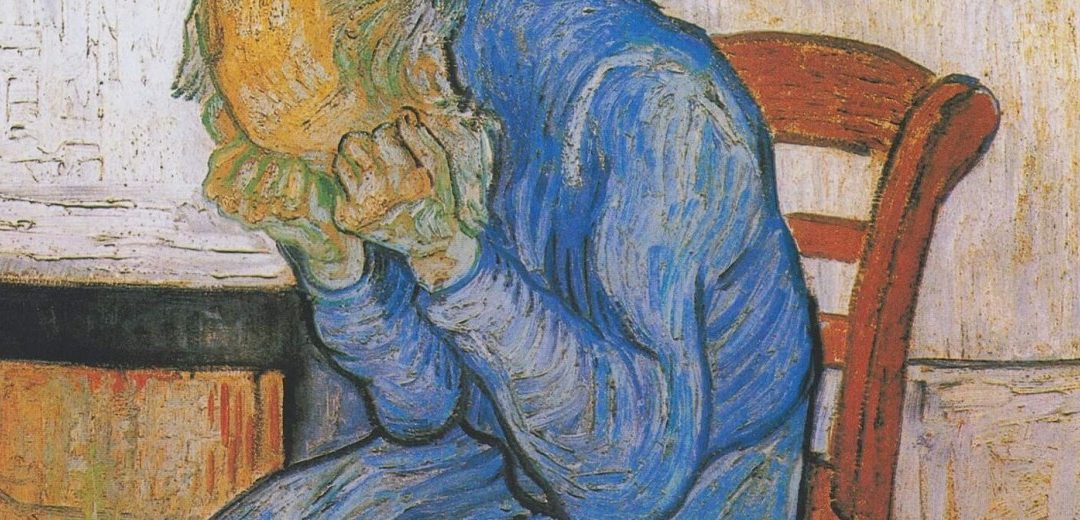Anxiety and Depression – A Retreat into a Constricted World
The following is a transcript of the video found at the end.
“Attention is not just another cognitive function. Attention is how our world comes into being for us. The altered nature of attention can appear to abolish parts of the world, collapse time and space [and] eviscerate emotion. . .It is a profoundly moral act.”
Iain McGilchrist, The Matter With Things
As was explored in the previous video, the world we experience is shaped by how we direct our attention. For reality is too complex, and we are too limited, to attend to but a sliver of all that exists. Attend to one sliver of reality and we experience one type of world, alter our attentional capacities, change what we attend to, and we change the very world we experience.
“It is. . .undisputed by neuropsychologists and philosophers that the type, and extent, of attention we pay changes the nature of the world that we experience.”
Iain McGilchrist, The Matter With Things
This simple assertion has profound implications for it means there are many possible worlds for each of us to experience. Some of these worlds are conducive to a life well lived, others are not. In this video we are going to explore the role that attention plays in the creation of the experiential world of anxiety disorders and depression as this knowledge can help us overcome these diseases of despair.

Chronic anxiety and depression can be caused by a myriad of factors – from biological predispositions to elements of our environment, to the influence of depressed or anxious parents or simply a cruel twist of fate – the triggers are many and varied. But whatever the cause, once these forms of distress take root, they are perpetuated, and exacerbated by, a maladaptive way of attending to the world. To understand the attentional stance that drives anxiety and depression we will begin with the analogy of the look versus the stare. For these two ways of visually attending to the world mirror the overall difference between a healthy way of deploying our attention and the way that perpetuates anxiety and depression.
“Consider the difference between looking and staring. A look is voluntary; it is also mobile, rising and falling in intensity as its foci of interest are taken up and then exhausted. A stare has, essentially, the character of a compulsion; it is steady, [lacking in variation], and ‘fixed.’”
Susan Sontang
Or as the psychiatrist Louis Sass explains:
“The “look” is closer to the “natural attitude” of everyday life. Emanating from a secure base (and rooted in the lived body), it travels within a stable horizon; it is. . .natural, capturing reality as conventionally and pragmatically conceived. The “stare,” by contrast, is rigid and fixed. . .”
Louis Sass, Madness and Modernism
The stare is rigid, fixed, compulsive, and lacks variation, and so too is the attentional stance of depressed and anxious individuals. This is most obvious at the level of the psyche. For a healthy mind displays a variation in thought patterns, sometimes the focus is on the good, sometimes the bad, sometimes the neutral. The depressed or anxious mind, however, lacks this variation and instead is rigidly and compulsively attuned to negative patterns of thought. The anxiety-ridden individual, for example, obsesses over potential threats and ruminates on all that could go wrong in life. Depression, on the other hand, is characterized by “a selective attention to and exaggeration of negative experiences of what is going “wrong” in one’s life rather than what is going “right”.” (Michael Mahoney, Self-Change) This compulsive focus on the bad, creates a narrowed experiential world as the good in life is ignored and the potential for good is denied.
But this maladaptive attentional stance is not limited to the realm of the psyche. For as Alexander Lowen wrote:
“Since psyche and soma [body] are like the two sides of a coin, head and tail, what goes on in one realm also occurs in the other.”
Alexander Lower, Fear of Life
A healthy individual will attend to the world with their body in a graceful and spontaneous manner. Depressed and anxious individuals do so in a rigid manner. A stooped posture, a caved in chest, tightened fists, a clenched jaw, all are reflections of the embodiment of anxiety and depression. And these ways of attending to the world with the body not only reflect the state of the psyche, but also magnify feelings of tension, anxiety, sadness or depression.
“If a person has a strong and secure sense of himself, he will naturally stand erect. If he is frightened, he will tend to cower. If he is sad or depressed, his body will droop. If he is trying to deny or compensate for inner feelings of insecurity, he will stand like a martinet, and his posture will be unnaturally rigid.”
Alexander Lower, The Spirituality of the Body
In addition to attending to the outer world with a rigid body, and to the inner world with a rigid focus on negative thoughts, the behaviour of depressed and anxious individuals is also rigid. Why move forward in life if each step is accompanied by catastrophizing thoughts and a body that generates feelings of tension, anxiety, and depression? Why take the risks that produce a fulfilling life if you believe you are destined to fail? Depressed and anxious individuals lack a healthy variation in patterns of behaviour, preferring passivity and avoidance, to novelty and the facing up to challenges.

This rigidity in mind, body and behaviour creates a self-perpetuating feedback loop. Negative thoughts rigidify the body, a rigid body leads to increased negative feelings and this acts as a barrier to constructive action. Or to phrase it in a different manner: Avoiding normal modes of action promotes the negative thought patterns of anxiety and depression. These negative thought patterns rigidify the body and these forms of thought and embodiment then further undermine healthy modes of action.
“…retreat from life leads to regression, and regression heightens resistance to life.”
Carl Jung, Theory of Psychoanalysis
To escape the downward spiral of depression and anxiety necessitates a broadening of attentional faculties to counteract the shrinking of our experiential world and the rigidification of our body. For the alternative is to descend into a stagnant and constricting existence, and to lose contact with a healthy flow of life:
“[Whenever] an individual’s sense of the flow of life has come to a stop or been frozen. . .that person can no longer realise himself, no longer mature, and will lose the capacity to make . . . emotional contact with others.”
Ludwig Binswanger
But how can we achieve this task when stuck in patterns of thought, embodiment, and behaviour that all feed upon each other and pull us further down into despair? In the final video of this series, we will explore this question.
“To find the ‘richest’ view [of the world], the one that seems truest to the world as a whole, in the sense that it resonates with our experience in the richest way, the imaginative exercise of inhabiting a number of points of view is required.”
Iain McGilchrist, The Matter With Things
About us:
Academy of Ideas is the creation of two brothers from Canada. All of the content is produced by us. We are not supported by or affiliated with any organization or university. Our goal is to to spread the message of individual liberty and empowerment to the world.
Become a Supporting Member and gain access to our growing library of Membership videos (currently 40+ videos)! Learn more by following the link below:
© 2021 Academy of Ideas
– Come Like Us on Facebook – Check us out on Instagram –
– Sign Up for our Newsletter –



 academyofideas.com
academyofideas.com








